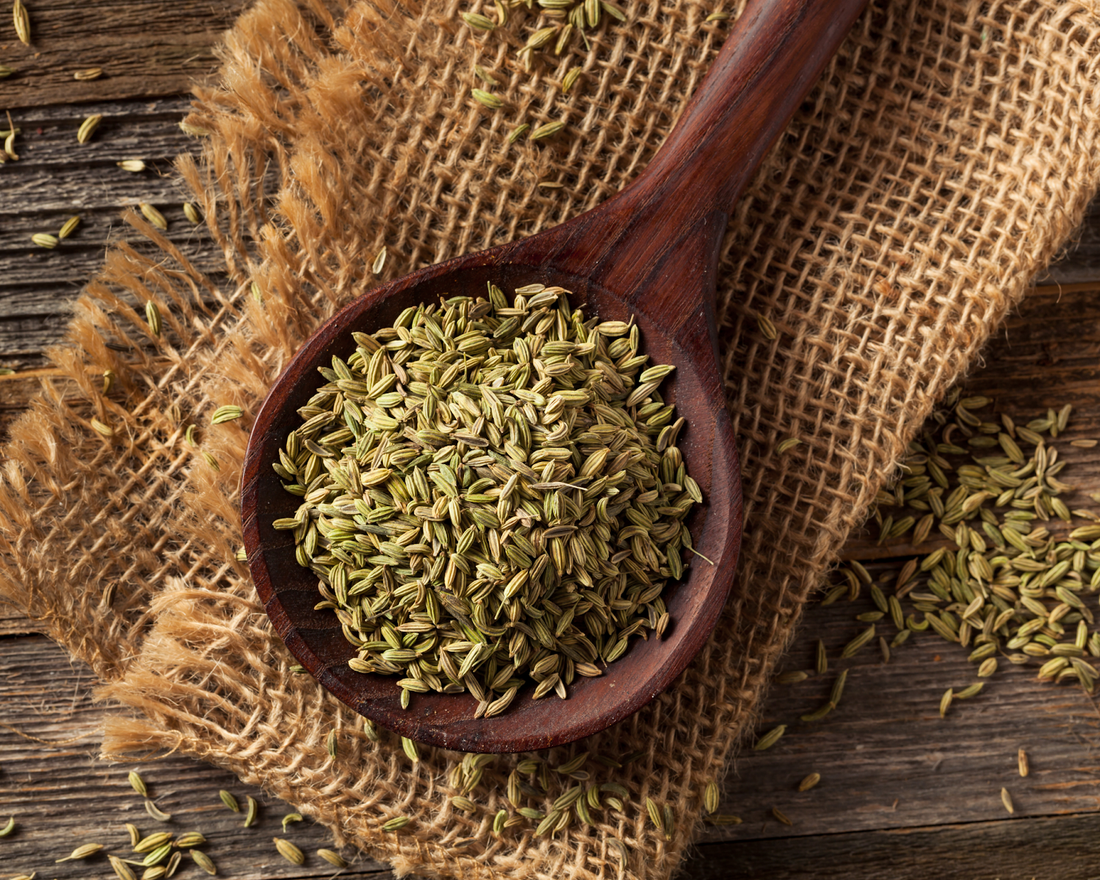The fennel, with its yellow flowers,
And in an earlier age than ours
Was gifted with the wondrous powers,
Lost vision to restore.
It gave new strength, and fearless mood;
And gladiators, fierce and rude,
Mingled it in their daily food;
And he who battled and subdued,
A wreath of fennel wore.
-H. W. Longfellow, “The Goblet of Life”
H. W. Longfellow wrote “The Goblet of Life,” which initially bore the title “Fennel,” in 1841. However, as the poet indicates, the plant and its seeds were valued by civilizations that long predated his own. Foeniculum vulgare, has been used as a medicine and culinary spice for centuries, and the plant is also eaten as a vegetable.
A Mediterranean herb, fennel was eaten and taken as medicine in the ancient empires of that region. It even has a role in Greek mythology—when Prometheus stole fire from the gods for mankind, he did so using a stalk of fennel. The ancient Greeks called fennel “marathon,” a name which refers to weight loss and reflects fennel’s qualities as an appetite suppressant. The name is also connected to the Greek-Persian battle in 490 B.C. that named the modern marathon: the battle of Marathon was allegedly fought on a field of fennel plants, and fennel became known as a symbol of victory. Ancient Greek physician Hippocrates also believed that fennel could help wet nurses produce more milk for their infant charges.
Roman naturalist Pliny the Elder observed snakes rubbing against fennel plants, and concluded that they did so to improve their eyesight after shedding their skins. He went on to recommend fennel as a treatment for more than twenty ailments. Fennel was considered a stimulant and a carminative, and was prescribed for gastrointestinal and respiratory problems, as well as to treat loss of eyesight. Even in the ancient world, medicinal use of fennel spread far beyond Mediterranean Europe—in China and India, fennel was used to treat snake bites and other poisons.
Long after the decline and fall of the ancient empires, fennel’s popularity in Europe remained. Holy Roman Emperor Charlemagne valued fennel, and encouraged its cultivation. A thirteenth-century text, the Book of Physicians of Myddvai, claimed that “he who sees fennel and gathers it not, is not a man but a devil.” Some households even bore fennel stalks above their doorways, to ward away evil, and seeds in their keyholes to prevent entry by ghosts. Even in the mid seventeenth century, physician Nicholas Culpepper suggested that fennel was an excellent seasoning for fish, and not merely for the flavour. Culpepper believed that fennel consumed “that phlegmatic humour, which fish most plentifully afford and annoy the body with.” (Medieval medicine held that the body contained and was controlled by four “humours”: blood, phlegm, black bile, and yellow bile.) Christians used fennel seeds to soothe hunger pangs during fasts (apparently eating the tiny seeds was not considered a violation), and this tradition arrived in the New World with the Puritans. In fact, eating fennel seeds during long church services was so common in New England, that they became known as “meetin’ seeds.”
Medicinal uses aside, fennel is also important culinarily. Fennel seeds are sweet, with a licorice aroma and taste similar to that of anise seeds, and are used in a variety of cuisine. Blending well with powerful spices like coriander, cumin, and pepper, fennel is a component of Chinese five-spice powder, and is commonly used in European fish dishes, sweet pickles, and Italian sausage. In India, fennel seeds are often toasted prior to use. Despite its ability to blend with other strong flavours, fennel can also be used in more delicate recipes. It is often used in breads, pastries, and various confectioneries. Infusing vodka with fennel makes aquavit, and the spice is also an ingredient in absinthe. Fennel can also be chewed after eating to freshen the breath—the seeds contain camphor and menthol.
Try toasting your Vanillablossom fennel seeds to encrust your salmon! Using whole spices is important, here. Trying to toast ground spices is asking for burned flavour!
Ingredients
2 tsp fennel seeds
2 tsp coriander seeds
½ tsp sea salt
½ tsp black peppercorns
2 filets salmon
2 tsp neutral oil, such as avocado, plus more for the skillet
Instructions
Preheat your oven to 375 degrees. While the oven warms up, heat a skillet over medium-high heat, and the coriander and fennel seeds to the dry skillet. Stir the seeds for approximately three minutes, or until they are fragrant and golden brown. Then, remove from heat and immediately transfer them to a mortar or spice grinder, so that they do not burn. Add the salt and pepper. Coarsely grind the spices using either a mortar and pestle or a spice grinder. Spread the spice mixture in an even layer on a plate. Brush a teaspoon of oil over each salmon filet, and place the filets oil side down onto the spice mixture. Heat additional oil (be generous with the amount) in an oven-safe skillet over medium high heat. Once the skillet is hot, add the salmon, spice-coated side down, and sear for two minutes. Immediately transfer the skillet to the preheated oven and cook for six to eight minutes, or until the salmon has become opaque and flakes easily. Serve hot with desired sides.

